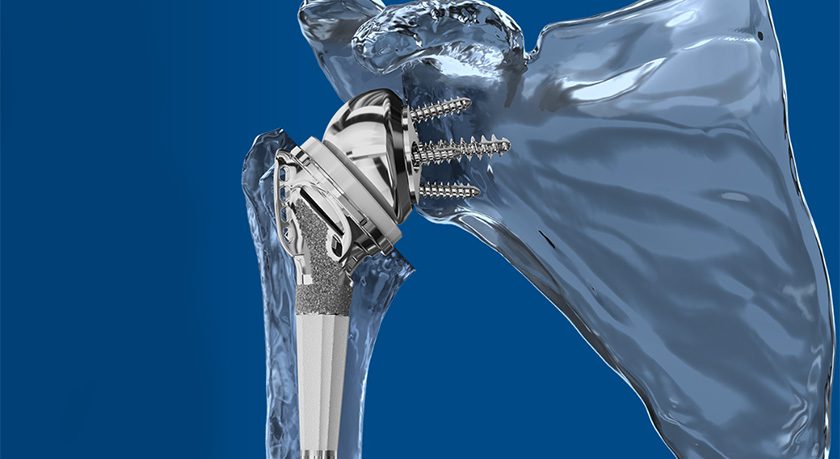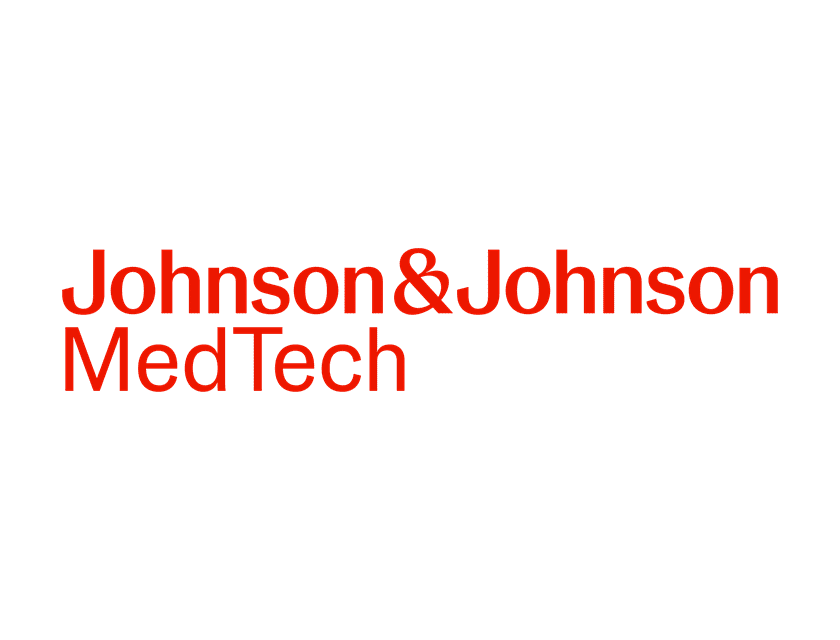

 Copy to clipboard
Copy to clipboard 
Sport medicine is a large yet fast-growing segment of orthopedics, but it has a few odd characteristics for such an industry. Below we take a look at sports medicine while considering the impact of consolidation, its importance to strategic growth initiatives, its surprisingly slow news and M&A activity, its funding environment and finally its avenues for evolution.
Lucrative, But Highly Consolidated
According to our estimates, sports medicine generated over $7 billion in worldwide revenue in 2024, accounting for about 12% of the global orthopedic market. While growth in larger segments like joint replacement and spine have moderated, sports medicine has maintained a solid mid-single-digit growth rate.
However, sports medicine is one of the most highly consolidated segments in orthopedics. Arthrex and Smith+Nephew dominate the space, accounting for more than half of all sports medicine sales.
Exhibit 1: Sports Medicine 2024 Market Share by Company ($ million)
Stryker and Johnson & Johnson MedTech are the only other sports medicine players with double-digit share. Combined, the top four players in sports medicine control 80% of the market.
A Strategic Pillar for Growth
Given its large sales base and higher growth rate, sports medicine is a key strategic focus for many of the largest orthopedic companies. Zimmer Biomet, for example, cited sports medicine and the ASC as critical pillars of growth.
“In alignment with our strategic priority of operational excellence, we are committed to elevating our performance in the critical U.S. market,” said Zimmer Biomet CEO Ivan Tornos. “This means specializing more aggressively in S.E.T. [sports, extremities, trauma] by adding new capabilities and expanding the portfolio and partnerships in the ASC environment. We want to be bolder in ASCs.”
The company closed out the fourth quarter of 2024 with a tremendous 22% growth rate in sports medicine and then followed that up with a strong showing in the first quarter, when it drove high-single-digit growth.
Zimmer Biomet’s S.E.T. category hasn’t always performed up to its capabilities, given the higher-growth segments it contains. Some things impacting the segment haven’t always been in the company’s control, like volume-based procurement in China and reimbursement changes for orthobiologics. Still, the category has a CAGR of just 1.5% over the last decade.
However, if Zimmer Biomet’s increased focus and recent performance in sports medicine are any indication, the segment could have another strong competitor emerging.
Bottom of the Stack for News and M&A
Medacta is another company we think bears watching in the sports medicine segment. Though it is operating from a small base, the company has quietly bolstered its presence in sports medicine, most recently with the acquisition of Anika Therapeutics legacy Parcus Medical assets.
It is sort of unusual for sports medicine to make news, especially via mergers and acquisitions. The segment accounts for the fewest press releases that we see, as well as the fewest orthopedic M&A transactions.
Since August 2024, just about a full year, we’ve generated 288 ORTHOFLASH® articles based on orthopedic press releases. Just 11% of them were related to sports medicine. For comparison, 21% of our news over the last twelve months was related to enabling technology.
Of the 31 sports medicine ORTHOFLASH items over the last year, regulatory clearances and trials/studies were the most common.
Exhibit 2: Sports Medicine News Types Over Last 12 Months
Likewise, sports medicine figured in just 9% of orthopedic M&A transactions we’ve tracked over the last decade. It might seem reasonable to assume that sports medicine M&A activity picked up in recent years as large strategic companies lean in to evaluate their growth rate. But activity in the segment slowed in the post-pandemic era, down to 8% from 10%.
Sports Medicine Funding Environment
Things are a little more active for sports medicine in the funding realm. According to our estimates, there have been six sports medicine funding announcements since the start of 2024, for a total of $114 million. OSSTEC, ABANZA and Moximed all secured funding over the last twelve months.
Exhibit 3: Sports Medicine Funding Announcements 2016 – 2025
While sports medicine doesn’t have staggering funding numbers, its activity is good for middle-of-the-pack status. Over the last decade, sports medicine had the third-most funding announcements, accounting for 15% of the industry total.
Like M&A, funding for sports medicine slowed in the post-pandemic era. Since 2021, sports medicine accounts for 13% of orthopedic funding, putting it in a tie with Orthobiologics for third-most activity.
It bears mentioning that the orthopedic funding environment has been relatively fraught for several years. Companies need to be far down the road toward commercialization to entice investors whose risk tolerance is significantly reduced compared to previous years. But it is hard to say if this is impacting sports medicine startups more than those in other segments.
Next Wave of Innovation
Given the relative dearth of news, acquisitions and funding for sports medicine, it seems like the segment has a somewhat narrow innovation pipeline. According to Michael McBrayer, Senior Vice President of Business Development and Professional Relations at Enovis, not much has changed for sports medicine procedures.
“The procedures haven’t changed all that much,” he said. “ACL reconstruction has been refined in terms of the ways grafts are sourced, but the fundamental techniques remain largely the same. It’s fair to say that there hasn’t been a massive leap forward in sports medicine compared to some other fields in orthopedics.”
But Mr. McBrayer identified pediatric sports medicine as an opportunity for the industry. He said the number of kids involved in organized sports has grown significantly while they’re engaged in repetitive movements that could lead to real injuries.
“One of the most important lessons learned, and it’s something we take seriously as a company, is that kids are not just small adults,” said Mr. McBrayer. “That’s one of the first, most fundamental realizations in pediatric care. Shrinking down adult products or protocols doesn’t work.”
He expects more companies to recognize this fundamental shift and more physicians to pursue specialized pediatric sports medicine training. That will ultimately bring purpose-built products, treatment protocols and support systems to the market.
Enabling technology is another opportunity for sports medicine to grow and improve. While these new technologies will likely not impact sports medicine to the same degree as spine or joint replacement, we think some of the visualization aids could be highly valuable to minimally invasive surgery.
“Some of the advanced imaging and navigation technologies that are commonly associated with robotics have proven useful in sports medicine applications,” said Nathan Skelly, M.D. “Stryker’s HipMap, for instance, has revolutionized my approach to hip arthroscopy. It provides a wealth of information that guides my approach during surgery. Before having access to the technology, I often felt like I was operating blindly.”
A growing pediatric specialty and improving navigation technology could help unlock some of sports medicine’s innovation and growth potential.
Sport medicine is a large yet fast-growing segment of orthopedics, but it has a few odd characteristics for such an industry. Below we take a look at sports medicine while considering the impact of consolidation, its importance to strategic growth initiatives, its surprisingly slow news and M&A activity, its funding environment and finally...
Sport medicine is a large yet fast-growing segment of orthopedics, but it has a few odd characteristics for such an industry. Below we take a look at sports medicine while considering the impact of consolidation, its importance to strategic growth initiatives, its surprisingly slow news and M&A activity, its funding environment and finally its avenues for evolution.
Lucrative, But Highly Consolidated
According to our estimates, sports medicine generated over $7 billion in worldwide revenue in 2024, accounting for about 12% of the global orthopedic market. While growth in larger segments like joint replacement and spine have moderated, sports medicine has maintained a solid mid-single-digit growth rate.
However, sports medicine is one of the most highly consolidated segments in orthopedics. Arthrex and Smith+Nephew dominate the space, accounting for more than half of all sports medicine sales.
Exhibit 1: Sports Medicine 2024 Market Share by Company ($ million)
Stryker and Johnson & Johnson MedTech are the only other sports medicine players with double-digit share. Combined, the top four players in sports medicine control 80% of the market.
A Strategic Pillar for Growth
Given its large sales base and higher growth rate, sports medicine is a key strategic focus for many of the largest orthopedic companies. Zimmer Biomet, for example, cited sports medicine and the ASC as critical pillars of growth.
“In alignment with our strategic priority of operational excellence, we are committed to elevating our performance in the critical U.S. market,” said Zimmer Biomet CEO Ivan Tornos. “This means specializing more aggressively in S.E.T. [sports, extremities, trauma] by adding new capabilities and expanding the portfolio and partnerships in the ASC environment. We want to be bolder in ASCs.”
The company closed out the fourth quarter of 2024 with a tremendous 22% growth rate in sports medicine and then followed that up with a strong showing in the first quarter, when it drove high-single-digit growth.
Zimmer Biomet’s S.E.T. category hasn’t always performed up to its capabilities, given the higher-growth segments it contains. Some things impacting the segment haven’t always been in the company’s control, like volume-based procurement in China and reimbursement changes for orthobiologics. Still, the category has a CAGR of just 1.5% over the last decade.
However, if Zimmer Biomet’s increased focus and recent performance in sports medicine are any indication, the segment could have another strong competitor emerging.
Bottom of the Stack for News and M&A
Medacta is another company we think bears watching in the sports medicine segment. Though it is operating from a small base, the company has quietly bolstered its presence in sports medicine, most recently with the acquisition of Anika Therapeutics legacy Parcus Medical assets.
It is sort of unusual for sports medicine to make news, especially via mergers and acquisitions. The segment accounts for the fewest press releases that we see, as well as the fewest orthopedic M&A transactions.
Since August 2024, just about a full year, we’ve generated 288 ORTHOFLASH® articles based on orthopedic press releases. Just 11% of them were related to sports medicine. For comparison, 21% of our news over the last twelve months was related to enabling technology.
Of the 31 sports medicine ORTHOFLASH items over the last year, regulatory clearances and trials/studies were the most common.
Exhibit 2: Sports Medicine News Types Over Last 12 Months
Likewise, sports medicine figured in just 9% of orthopedic M&A transactions we’ve tracked over the last decade. It might seem reasonable to assume that sports medicine M&A activity picked up in recent years as large strategic companies lean in to evaluate their growth rate. But activity in the segment slowed in the post-pandemic era, down to 8% from 10%.
Sports Medicine Funding Environment
Things are a little more active for sports medicine in the funding realm. According to our estimates, there have been six sports medicine funding announcements since the start of 2024, for a total of $114 million. OSSTEC, ABANZA and Moximed all secured funding over the last twelve months.
Exhibit 3: Sports Medicine Funding Announcements 2016 – 2025
While sports medicine doesn’t have staggering funding numbers, its activity is good for middle-of-the-pack status. Over the last decade, sports medicine had the third-most funding announcements, accounting for 15% of the industry total.
Like M&A, funding for sports medicine slowed in the post-pandemic era. Since 2021, sports medicine accounts for 13% of orthopedic funding, putting it in a tie with Orthobiologics for third-most activity.
It bears mentioning that the orthopedic funding environment has been relatively fraught for several years. Companies need to be far down the road toward commercialization to entice investors whose risk tolerance is significantly reduced compared to previous years. But it is hard to say if this is impacting sports medicine startups more than those in other segments.
Next Wave of Innovation
Given the relative dearth of news, acquisitions and funding for sports medicine, it seems like the segment has a somewhat narrow innovation pipeline. According to Michael McBrayer, Senior Vice President of Business Development and Professional Relations at Enovis, not much has changed for sports medicine procedures.
“The procedures haven’t changed all that much,” he said. “ACL reconstruction has been refined in terms of the ways grafts are sourced, but the fundamental techniques remain largely the same. It’s fair to say that there hasn’t been a massive leap forward in sports medicine compared to some other fields in orthopedics.”
But Mr. McBrayer identified pediatric sports medicine as an opportunity for the industry. He said the number of kids involved in organized sports has grown significantly while they’re engaged in repetitive movements that could lead to real injuries.
“One of the most important lessons learned, and it’s something we take seriously as a company, is that kids are not just small adults,” said Mr. McBrayer. “That’s one of the first, most fundamental realizations in pediatric care. Shrinking down adult products or protocols doesn’t work.”
He expects more companies to recognize this fundamental shift and more physicians to pursue specialized pediatric sports medicine training. That will ultimately bring purpose-built products, treatment protocols and support systems to the market.
Enabling technology is another opportunity for sports medicine to grow and improve. While these new technologies will likely not impact sports medicine to the same degree as spine or joint replacement, we think some of the visualization aids could be highly valuable to minimally invasive surgery.
“Some of the advanced imaging and navigation technologies that are commonly associated with robotics have proven useful in sports medicine applications,” said Nathan Skelly, M.D. “Stryker’s HipMap, for instance, has revolutionized my approach to hip arthroscopy. It provides a wealth of information that guides my approach during surgery. Before having access to the technology, I often felt like I was operating blindly.”
A growing pediatric specialty and improving navigation technology could help unlock some of sports medicine’s innovation and growth potential.

You’ve reached your limit.
We’re glad you’re finding value in our content — and we’d love for you to keep going.
Subscribe now for unlimited access to orthopedic business intelligence.
ME
Mike Evers is a Senior Market Analyst and writer with over 15 years of experience in the medical industry, spanning cardiac rhythm management, ER coding and billing, and orthopedics. He joined ORTHOWORLD in 2018, where he provides market analysis and editorial coverage.







